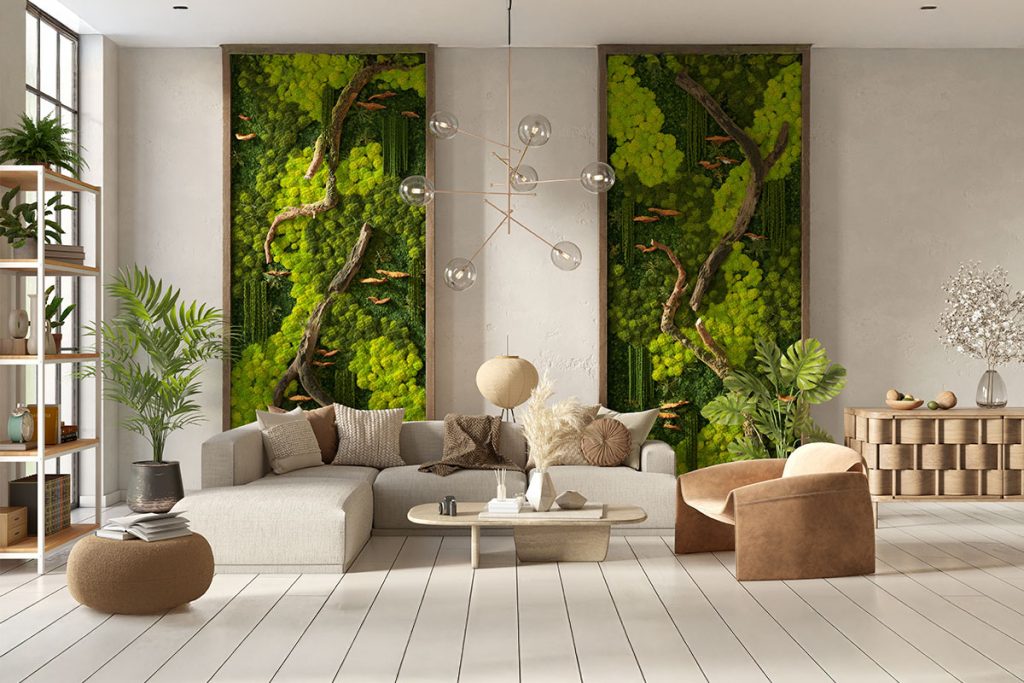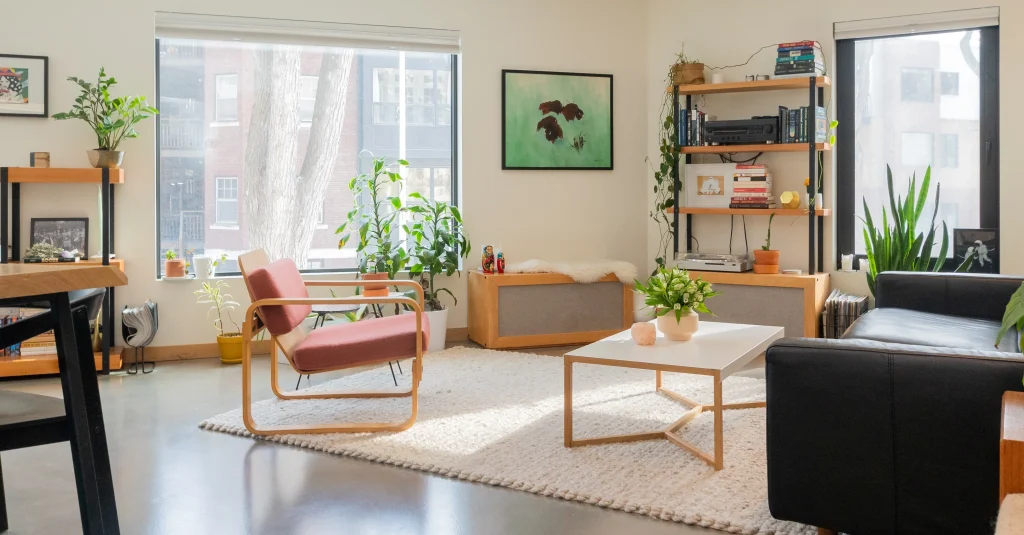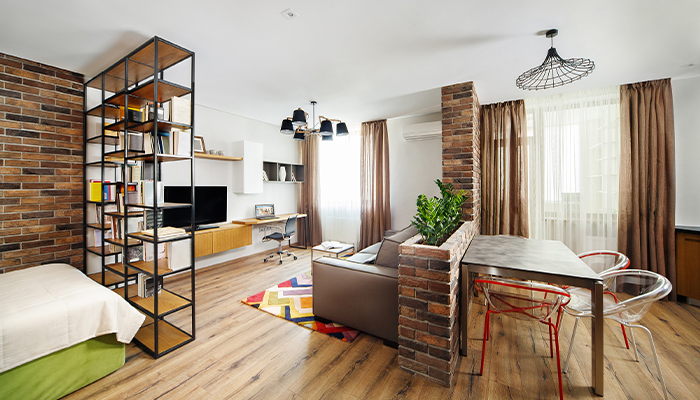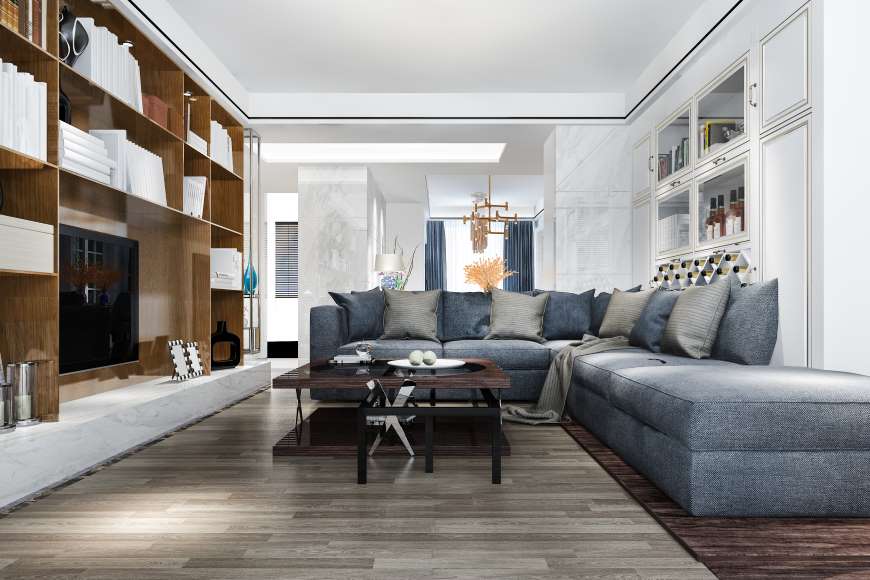Home interior design is constantly evolving, reflecting not only aesthetic preferences but also lifestyle changes and technological advancements. As we step further into 2025, several design trends are shaping the way we decorate and organize our living spaces. From sustainable materials to smart technology, homeowners are embracing styles that combine functionality, comfort, and elegance. Here are the top trends in home interior design today.
1. Sustainable and Eco-Friendly Design

Sustainability has moved from being a niche concept to a mainstream trend in interior design. Homeowners are increasingly opting for eco-friendly materials such as reclaimed wood, bamboo, cork, and recycled metal. Natural, non-toxic paints and finishes are preferred to reduce environmental impact and improve indoor air quality. Beyond materials, sustainability also influences design choices, with people embracing furniture and decor that is durable and timeless rather than trendy but disposable.
2. Biophilic Design
Connecting with nature indoors is more popular than ever. Biophilic design integrates natural elements like plants, sunlight, water features, and organic materials into living spaces. Indoor gardens, living walls, and abundant houseplants not only enhance aesthetics but also improve mental well-being. Large windows and open layouts are used to maximize natural light, creating a sense of openness and harmony with the outdoors.
3. Warm and Earthy Color Palettes
While minimalist interiors with neutral tones dominated recent years, 2025 sees a shift toward warmer, earth-inspired hues. Terracotta, olive green, mustard yellow, and soft browns are gaining popularity, bringing comfort and coziness to interiors. These colors pair well with natural textures like wood, stone, and rattan, creating inviting and balanced spaces that feel grounded and serene.
4. Multifunctional Spaces

With more people working from home and prioritizing versatile living areas, multifunctional spaces are a major trend. Rooms are designed to serve multiple purposes, such as a home office that doubles as a guest room, or a living area that converts into a fitness space. Built-in furniture, foldable desks, and modular storage solutions help maximize space while maintaining style. This trend reflects the growing need for adaptability in modern living.
5. Textured Surfaces and Bold Materials
Designers are moving beyond flat, minimalist surfaces to incorporate textures and tactile materials. Velvet sofas, woven rugs, natural stone countertops, and textured wall panels are being embraced to add depth and personality to interiors. These tactile elements make a space feel more dynamic and inviting while providing a sensory experience that enhances comfort and luxury.
6. Smart Home Integration
Technology is increasingly shaping interior design. Smart homes equipped with automated lighting, climate control, security systems, and voice-activated devices are becoming standard. Designers are finding ways to integrate technology seamlessly, ensuring it complements the decor rather than overpowering it. Concealed wiring, built-in speakers, and minimalist control panels help maintain a sleek and cohesive look.
7. Statement Ceilings and Walls

Gone are the days when walls and ceilings were just backgrounds. Today, statement ceilings and accent walls are making a strong comeback. Bold paint colors, geometric patterns, textured wallpaper, or even artistic murals create focal points that draw attention and define the character of a room. These design choices allow homeowners to express individuality and creativity in unexpected ways.
8. Vintage and Retro Revival
Vintage and retro elements are also trending, as homeowners seek to blend nostalgia with modernity. Mid-century furniture, classic lighting fixtures, and retro color schemes are being incorporated into contemporary homes. This mix of old and new creates a unique, eclectic look that balances elegance with personality, ensuring interiors feel both curated and lived-in.
9. Minimalist Yet Cozy
Minimalism continues to inspire interiors, but with a warmer, more comfortable twist. The trend is toward “soft minimalism,” where clutter is minimized but spaces remain inviting. Soft textiles, plush seating, and layered rugs add warmth and personality without compromising the clean lines and simplicity central to minimalist design.
Conclusion
Home interior design in 2025 is about balance—between sustainability and luxury, technology and comfort, minimalism and personality. From earthy palettes and biophilic elements to multifunctional spaces and smart home integration, today’s trends reflect a desire for homes that are not only stylish but also functional and meaningful. Embracing these trends allows homeowners to create spaces that nurture well-being, foster creativity, and offer a true sense of belonging.

